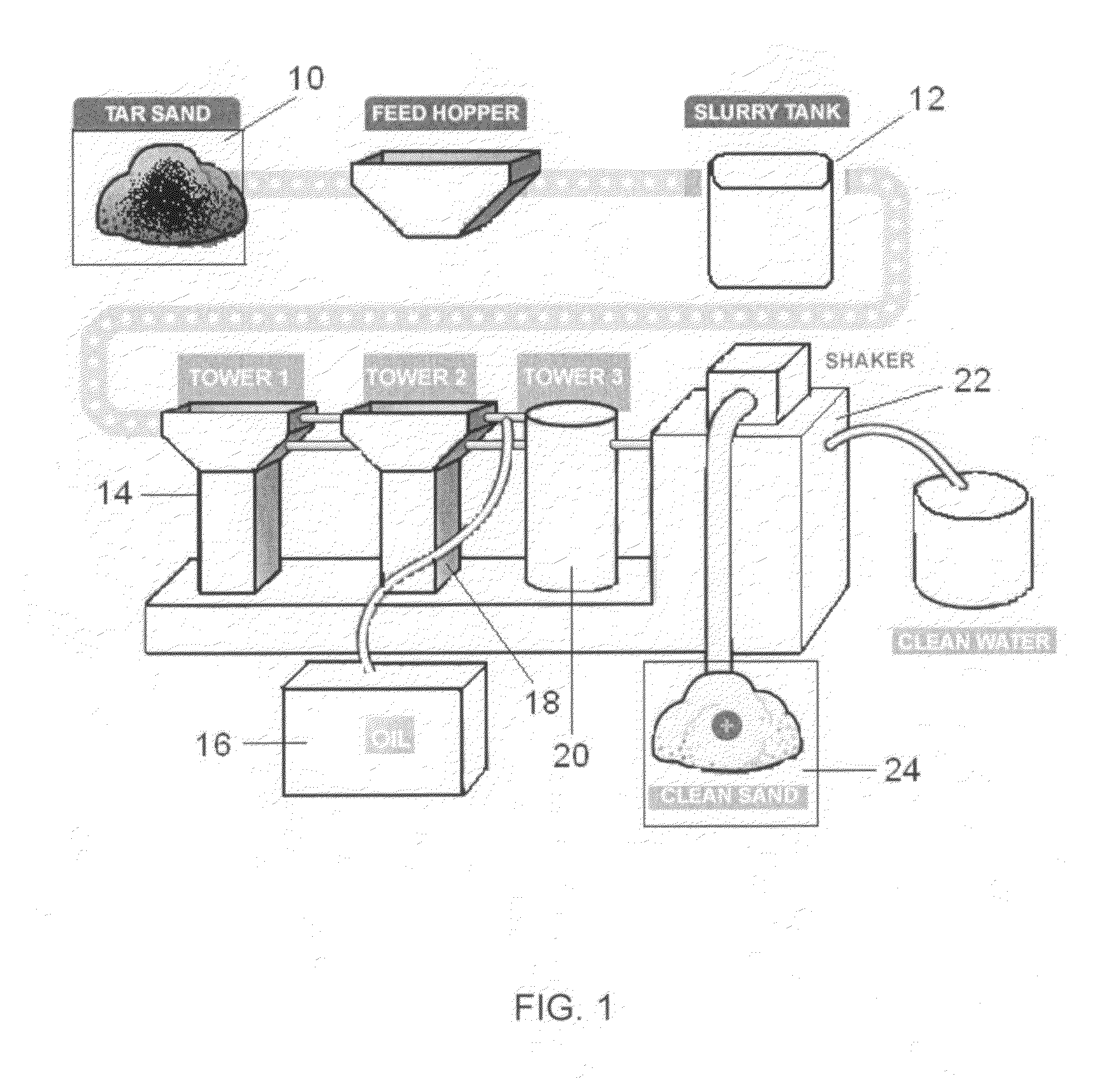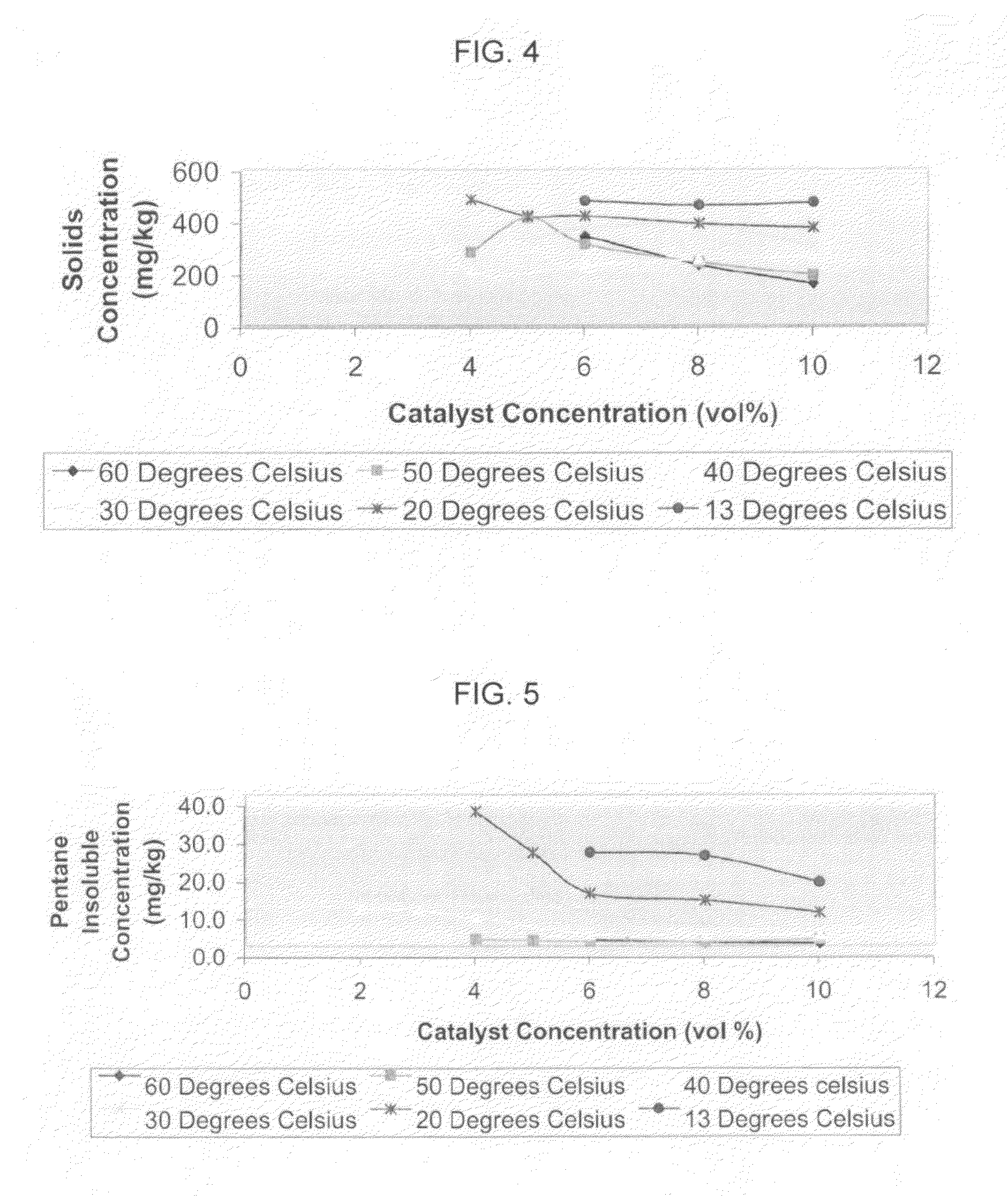Removal of hydrocarbons from particulate solids
a technology of hydrocarbons and solids, applied in the field of composition and a process for removing hydrocarbons from solid parts, can solve the problems of difficult disposal, process producing environmental issues, and energy-intensive hot water techniques
- Summary
- Abstract
- Description
- Claims
- Application Information
AI Technical Summary
Benefits of technology
Problems solved by technology
Method used
Image
Examples
examples
[0063]The following examples are intended to illustrate embodiments of the claimed invention and not to limit the claimed invention in any manner.
[0064]1. Formation of the Cleaning Emulsion
[0065]A cleaning emulsion of the present invention was formed from 410 litres of d-limonene mixed with 2 litres of Witconate P-1059™ (Akzo Nobel Surface Chemistry) and about 20 ml of an anti-foaming agent. Approximately 600 litres of water was then added and the mixture agitated between about 24 to 48 hours to form a relatively stable emulsion, similar to cow's cream in colour and consistency.
[0066]2. Effect of Solvent Concentration
[0067]Batch extraction runs were performed using oil sands from Utah to determine effectiveness of the cleaning emulsion in removing the hydrocarbons from the sand. Batch extraction runs at various temperatures and with various concentrations of the cleaning composition (40% d-limonene) were conducted and various data collected. The cleaning composition was added to a s...
PUM
| Property | Measurement | Unit |
|---|---|---|
| temperature | aaaaa | aaaaa |
| temperature | aaaaa | aaaaa |
| viscosity | aaaaa | aaaaa |
Abstract
Description
Claims
Application Information
 Login to View More
Login to View More - R&D
- Intellectual Property
- Life Sciences
- Materials
- Tech Scout
- Unparalleled Data Quality
- Higher Quality Content
- 60% Fewer Hallucinations
Browse by: Latest US Patents, China's latest patents, Technical Efficacy Thesaurus, Application Domain, Technology Topic, Popular Technical Reports.
© 2025 PatSnap. All rights reserved.Legal|Privacy policy|Modern Slavery Act Transparency Statement|Sitemap|About US| Contact US: help@patsnap.com



